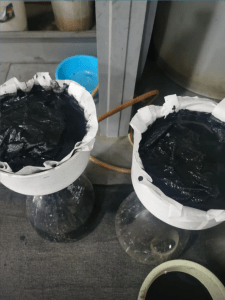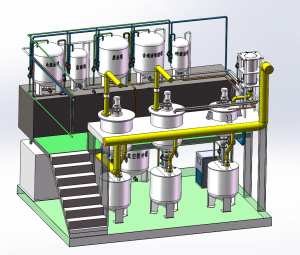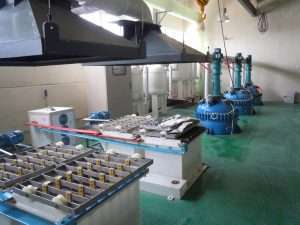Call us now:
Rhodium refining is a complex process that involves several steps to extract pure rhodium metal from its ore or scrap material. Here are the general steps involved in the rhodium refining process:
Collection of rhodium-bearing material: Rhodium is a rare metal and is often found in very small quantities in other metals, such as platinum, palladium, and nickel. Therefore, the first step in the refining process is to collect the rhodium-bearing material.
Smelting: The collected material is then smelted in a furnace to separate the rhodium from other metals. The temperature required for smelting depends on the type of material being processed.
Acid digestion: After smelting, the resulting material is dissolved in hydrochloric acid to separate rhodium from other impurities.
Precipitation: Once the rhodium has been dissolved, it is precipitated out of the solution using a reducing agent such as zinc or sodium metabisulfite. This forms a black precipitate that contains rhodium and other impurities.
Filtration: The black precipitate is then filtered to remove any remaining impurities.
Calcination: The filtered precipitate is heated at high temperatures in a furnace to remove any remaining impurities and to convert the rhodium into a more stable form.
Refining: Finally, the calcined rhodium is refined to remove any remaining impurities and to produce pure rhodium metal. This can be done using a variety of techniques, including electrolysis, chemical reduction, and distillation.
Overall, the rhodium refining process is a highly technical and complex process that requires specialized equipment and expertise. However, the end result is high-quality, pure rhodium that can be used in a variety of industrial applications.
Electrolysis: In this refining method, the calcined rhodium is dissolved in a suitable solvent, and an electric current is passed through it. This separates the rhodium from other impurities and produces pure rhodium metal.
Chemical reduction: Another method of refining rhodium involves chemical reduction. The calcined rhodium is mixed with a reducing agent such as hydrogen or carbon monoxide, which reacts with the impurities, leaving behind pure rhodium.
Distillation: In the final stage of refining, the pure rhodium obtained from the previous step is further purified using distillation. This involves heating the rhodium to a high temperature to vaporize it, then condensing the vapors to obtain pure rhodium.
After the refining process is complete, the pure rhodium metal can be used in a variety of applications, including the production of catalysts for the chemical industry, electronic components, and jewelry. The high cost and rarity of rhodium make it a valuable commodity, and the refining process plays a crucial role in making it available for commercial use.


